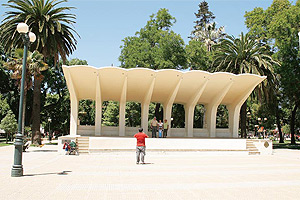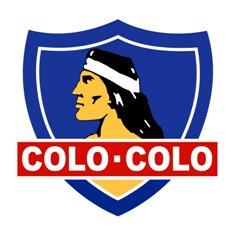The different natural attractions are part of this region’s identity. According to the Statistics Unit of the National Tourism Service (Sernatur), in 2007, out of the 174,751 tourists that visited this zone, 165,100 were national and only 10,651 were foreign. It has 184 tourist lodging establishments, 2,416 rooms and 6,748 beds.
Province of Curico
– Curico: foundedn in 1743, it is the capital of this province. Among its main attractions one may find Condell hill and the Plaza de Armas (declared a Typical Zone in 1986), which includes over 60 canary island date palms, which were planted in 1910. In addition, in this spot, we find the Quisco Civico Historical Monument (built in 1905).
– Romeral: this comuna (county), which is found 10 km from Curico, is known for its cherries. In addition, in the surrounding area one may visit the Los Trapenses monastery, the old Pumaiten beach, the Guaico Tres reservoir and the San Pedro baths.
– Los Queñes: located in the cordilleran sector 37 km from Romeral, this zone stands out for its old customs house and the Azufre hot springs, baths that have natural pools rich in sulfur due to its close proximity with Peteroa and Planchon volcanoes.
– Teno: it is located 16 km from Curico, and a few of its highlights are the river of the same name and the house of Francisco Villota, a patriot who fought against the royalists in the Independence war. The hideout of “bandido Neira” (Neira the bandit) is located in the Comalle area, a man who terrorized the countryside in the past. Also, in the El Guanaco sector, there are tacite rocks that date back approximately 3,000 years.
– Molina: this comuna –located 15 km from Curico- is a zone of farmable valleys, mainly in the Lontue area, where there are also many vineyards. In addition, Radal Siete Tazas National Park is found in the Andean foothills.
– Hualañe: this township is found 82 km west of Curico. Its main attractions are Paula bridge, which connects it with Talca, the adobe church, the parish of San Policarpo, La Huerta lookout point and el Morro lagoon.
– Lloca: this is the main beach community of the coast of Curico. It has far reaching black sand beaches. You can do some sports fishing in the area called La Pesca, because the Mataquito river flows into here. You can also visit Duao fishing cove.
– Llico: it is an extensive gray sand beach found at the border with the region of O’Higgins. Since it’s a very windy area and has large waves, it is an ideal place to practice windsurfing.
– Vichuquen: this town –declared a Typical Zone in 1990- is found at the northeastern end of this province. It is characterized by its adobe constructions and its white clay handicrafts. In addition, it has a lake that bears the same name that is surrounded by thick pine forests. One may practice different water sports on the lake.
Province of Talca
– Talca: among its main attractions, one may find the O’Higgins and Fine Arts museums, the Cathedral, the Central Market, the small beach community of Guillermo Urzua (which is next to the Claro river) and La Virgen hill.
– Constitucion: it is the most important beach community of the region. It has extensive beaches that have large rock formations, with highlights including Piedra de la Iglesia (The Church Stone), La Ventana (The Window) and El Elefante echado (The Lying Elephant)
– Vilches: it is found in the comuna (county) of San Clemente and when it comes to interesting places to see, you have El Peine, El Picazo and El Afligido hills, the Lircay and El Morillo rivers, the Colorada and El Tomate lagoons and the Los Coigües ravine, where there are many of these plants.
Province of Linares
Linares was founded by Ambrosio O’Higgins on May 23rd, 1794, under the name Villa San Ambrosio de Linares. Its main attractions are the Plaza de Armas, the San Ambrosio Cathedral, the Corazon de Maria church and the Museum of National Art and Handicrafts.
– Colbun lake: it is the largest artificial lake in the country (1,490 million cubic meters of water) and is located 50 km from Talca, 440 masl. It has crystalline waters and is ideal for practicing water sports.
– Yerbas Buenas: this town, which was declared a Typical Zone in 1979, is located 10 km from the cit of Linares. It stands out for its colonial style architecture and the Historical Museum of Yerbas Buenas, which was founded on October 29th, 1976 and declared a National Monument on August 22nd, 1984. Here, one may find manuscripts and documents relating to the Independence of Chile, as well as artifacts and home utensils used in Colonial days.
– Rari: this town is located in the pre-mountainous are of this province and it is famous for its beautiful horsehair handicrafts.
Province of Cauquenes
– Cauquenes: this city was founded by Jose Antonio Manso de Velaso on May 9th, 1742. Nowadays, its main tourism point in the Municipal Market, which was remodeled in 2005.
– Chanco: this town was declared a typical zone in 1999. It stands out, because in February, a popular festivity based on Mexican music that honors Guadalupe del Carmen is celebrated. She was a woman from this area who was a popular singer of this kind of music.
– Pelluhue: beach community found at the coast of this province that is characterized by its gray sand beaches. At the end of January and early February, the traditional loose mare threshing is held in this area.
– Curanipe: sports such as surfing and body boarding are practiced in this beach town, which is around 10 km from Pelluhue. Another activity is pole fishing, which can be done at the shore or above the rockeries.








